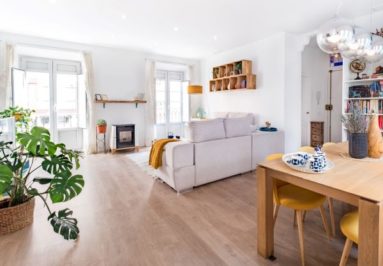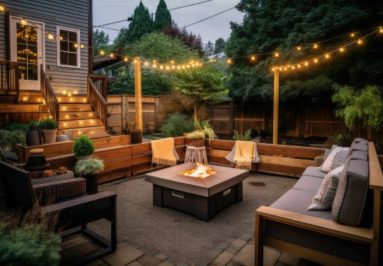If you’ve ever lived near a noise source, you know the negative effect noise disturbances can have on your life. Removing the noise source is typically impossible, and hiring a soundproofing expert is expensive, leaving most victims of noise problems feeling hopeless.
However, many noise problems are the result of common weak spots that can be easily fixed. Keep reading to learn about three unexpected ways noise is getting into your home and what you can do to stop it.
The Problem: Thin Walls
Many apartments and homes have walls that are inappropriately-designed for the space. They may be acceptable for retail or office space, but when soundproofing is critical (such as in residential and multi-family properties), wall density and thickness cannot be sacrificed.
The Fix: Consider Adding Mass Loaded Vinyl to Improve Walls
High-end applications, such as Mass Loaded Vinyl, are designed to improve the STC of your walls without requiring thick topical applications that can make your room feel smaller. Installed directly on the studs, or on top of an existing layer of drywall, MLV can minimize any audible noise coming through the wall, quickly and easily.
The Problem: Cracked Walls
Believe it or not, minor cracks and gaps in walls are one of the most common culprits of a noise problem, causing even the most elaborate soundproofing solutions to fail. Cracks make a wall susceptible to sound waves, which will easily slip through weak spots and find their way into your home.
The Fix: Apply Caulk to Gaps and Slits
Surprisingly, this overwhelmingly common sound problem has one of the simplest solutions: caulk. Start by examining your walls, paying special attention to areas surrounding doors and windows, where cracks are most likely to occur. Mark any weak spots that you find and then seal them up. Any basic caulk will work, but if you want some extra reinforcement consider using green glue, a sealant designed specifically to remedy sound problems.
The Problem: Gaps underneath Doors
As we’ve noted, any gaps increase susceptibility to noise problems. Larger gaps, like the space between a doorway and the floor, are bigger problems than small cracks in the walls. If you are able to slide a piece of paper underneath your front door, the gap is too big and sound is definitely coming in through the open space.
The Fix: Add Door Sweeps to Minimize Sound Flanking
Installing an entirely new door is unnecessary to fix this problem. A door sweep is all you need to fill in the space. Sweeps are designed to fill any space left between a door and the floor beneath it, creating a tight seal and blocking sound waves from entering.
The Problem: Weak Windows
Windows are another spot targeted by sound waves. Most window glass is relatively thin, allowing sound to sneak through. Additionally, the space around windows is extra susceptible to cracks, making windows the perfect spot for sound waves to hit.
The Fix: Install Soundproof Curtains
Soundproof curtains are an affordable solution to reinforce your windows. These curtains are made from highly engineered, soundproof material designed to block sound waves as the hit. They also create a tight seal around the window, strengthening the space against noise. These ones can be customized to fit any window and are offered in a variety of fabrics for an inconspicuous solution.
Noise can be a sneaky culprit, but with these tips you can easily prepare your home to take on outside noise. Did one of these solutions work for you? Let us know in the comments below!





